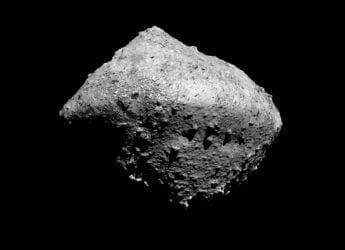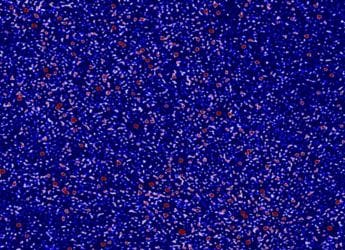- Home
- Science
- Science News
- Scientists Create Most Detailed Radio Map of Early Universe Using MWA
Scientists Create Most Detailed Radio Map of Early Universe Using MWA
Astronomers using nine years of MWA data have set the strongest limits yet on the 21-cm hydrogen signal from the universe’s dark ages.

Photo Credit: ICRAR
Using nine years of MWA data, astronomers set record 21-cm limits, unveiling early cosmic heating origins
Astronomers are narrowing down on the evidence of the universe in its dark ages by searching for the faint 21-centimeter radio signal emitted by early-day hydrogen. It is a very faint emission, which happens due to a spin-flip transition in the hydrogen atoms, and it functions as a cosmic thermometer showing when the earliest stars and black holes started heating the gas between galaxies. Based on close to ten years of observations of the Murchison Widefield Array (MWA) in Australia, scientists have produced the most detailed radio map of the early universe so far and placed the most stringent constraints on this ancient signal.
Methods and Challenges
According to the research, the team led by Nunhokee relied on more than nine years of the MWA observations in the Western Australian region to seek a weak signal of hydrogen 21-cm. They simply attacked the line that is normally obscured by bright foreground noise of the Milky Way and the telescope.
Their sophisticated statistical filtering methods were able to isolate the signal and produced a cosmic radio sky map that was cleaner than ever before and a narrower upper limit on its strength.
Implications and Future Prospects
The team found no evidence for a cold early universe's absorption feature, ruling out an extremely cold cosmic dawn. Instead, the limits suggest the intergalactic medium was warmed by this epoch, consistent with models where X-rays from early black holes and stellar remnants heated the gas.
This work provides the first observational hint of a heated intergalactic medium at redshifts ~6.5-7.0. The next-generation Square Kilometer Array (SKA) radio telescope is expected to detect the 21-cm signal, with only a few hours of data needed to reveal this cosmic signal.
For the latest tech news and reviews, follow Gadgets 360 on X, Facebook, WhatsApp, Threads and Google News. For the latest videos on gadgets and tech, subscribe to our YouTube channel. If you want to know everything about top influencers, follow our in-house Who'sThat360 on Instagram and YouTube.
Related Stories
- Samsung Galaxy Unpacked 2025
- ChatGPT
- Redmi Note 14 Pro+
- iPhone 16
- Apple Vision Pro
- Oneplus 12
- OnePlus Nord CE 3 Lite 5G
- iPhone 13
- Xiaomi 14 Pro
- Oppo Find N3
- Tecno Spark Go (2023)
- Realme V30
- Best Phones Under 25000
- Samsung Galaxy S24 Series
- Cryptocurrency
- iQoo 12
- Samsung Galaxy S24 Ultra
- Giottus
- Samsung Galaxy Z Flip 5
- Apple 'Scary Fast'
- Housefull 5
- GoPro Hero 12 Black Review
- Invincible Season 2
- JioGlass
- HD Ready TV
- Laptop Under 50000
- Smartwatch Under 10000
- Latest Mobile Phones
- Compare Phones
- Red Magic 11 Pro
- Red Magic 11 Pro+
- Huawei Nova Flip S
- Huawei Nova 14 Vitality Edition
- OPPO Find X9
- OPPO Find X9 Pro
- Honor Magic 8 Pro
- Honor Magic 8
- MacBook Pro 14-inch (M5, 2025)
- Asus Vivobook S16 (S3607QA)
- OPPO Pad 5
- Apple iPad Pro 13-inch (2025) Wi-Fi + Cellular
- OPPO Watch S
- Honor Watch 5 Pro
- Xiaomi Xiaomi TV S Pro Mini LED 55 2026
- Xiaomi TV S Pro Mini LED 65 2026
- Asus ROG Ally
- Nintendo Switch Lite
- Haier 1.6 Ton 5 Star Inverter Split AC (HSU19G-MZAID5BN-INV)
- Haier 1.6 Ton 5 Star Inverter Split AC (HSU19G-MZAIM5BN-INV)

















